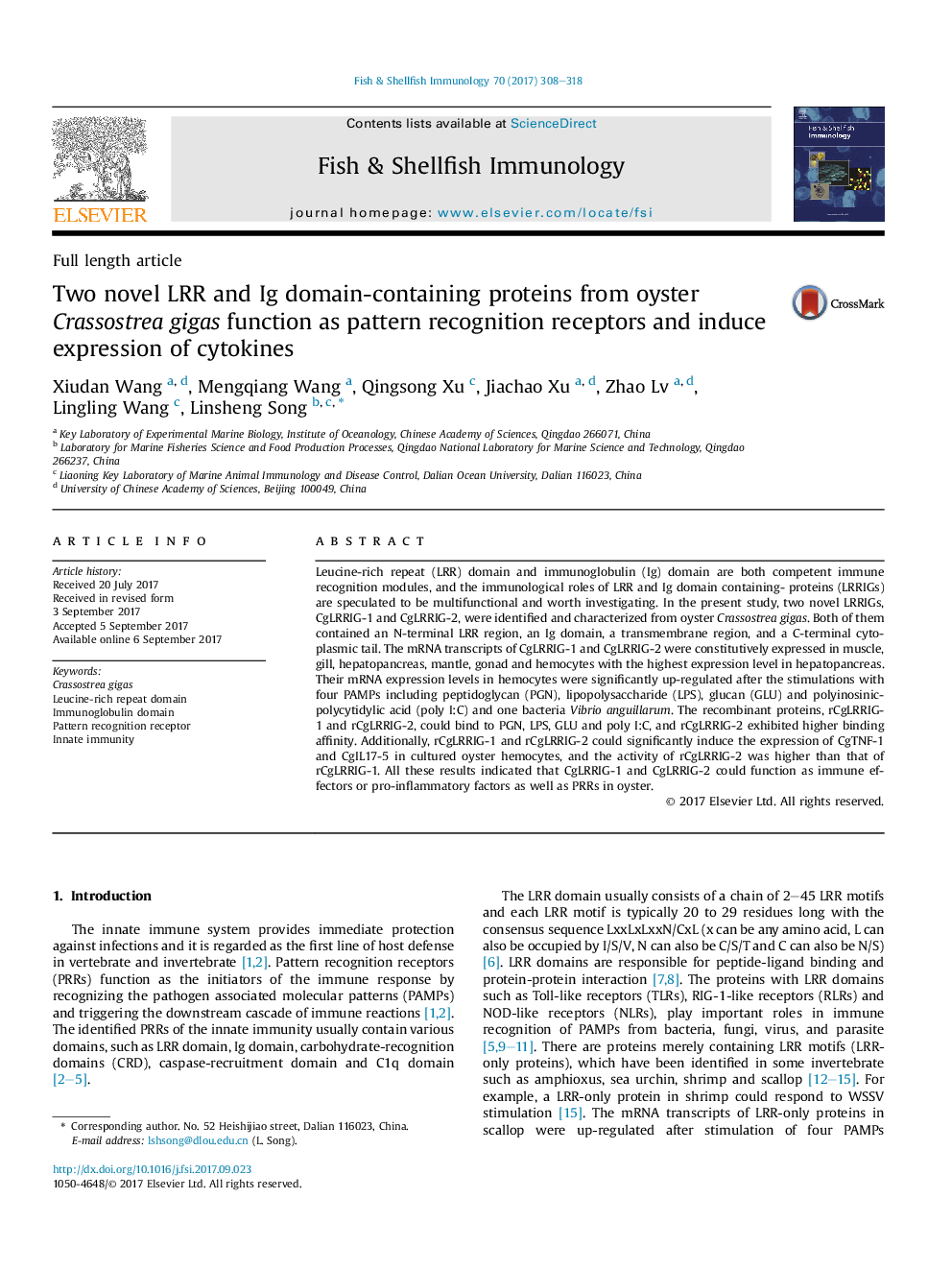| Article ID | Journal | Published Year | Pages | File Type |
|---|---|---|---|---|
| 5540284 | Fish & Shellfish Immunology | 2017 | 11 Pages |
Abstract
Leucine-rich repeat (LRR) domain and immunoglobulin (Ig) domain are both competent immune recognition modules, and the immunological roles of LRR and Ig domain containing- proteins (LRRIGs) are speculated to be multifunctional and worth investigating. In the present study, two novel LRRIGs, CgLRRIG-1 and CgLRRIG-2, were identified and characterized from oyster Crassostrea gigas. Both of them contained an N-terminal LRR region, an Ig domain, a transmembrane region, and a C-terminal cytoplasmic tail. The mRNA transcripts of CgLRRIG-1 and CgLRRIG-2 were constitutively expressed in muscle, gill, hepatopancreas, mantle, gonad and hemocytes with the highest expression level in hepatopancreas. Their mRNA expression levels in hemocytes were significantly up-regulated after the stimulations with four PAMPs including peptidoglycan (PGN), lipopolysaccharide (LPS), glucan (GLU) and polyinosinic-polycytidylic acid (poly I:C) and one bacteria Vibrio anguillarum. The recombinant proteins, rCgLRRIG-1 and rCgLRRIG-2, could bind to PGN, LPS, GLU and poly I:C, and rCgLRRIG-2 exhibited higher binding affinity. Additionally, rCgLRRIG-1 and rCgLRRIG-2 could significantly induce the expression of CgTNF-1 and CgIL17-5 in cultured oyster hemocytes, and the activity of rCgLRRIG-2 was higher than that of rCgLRRIG-1. All these results indicated that CgLRRIG-1 and CgLRRIG-2 could function as immune effectors or pro-inflammatory factors as well as PRRs in oyster.
Keywords
Related Topics
Life Sciences
Agricultural and Biological Sciences
Aquatic Science
Authors
Xiudan Wang, Mengqiang Wang, Qingsong Xu, Jiachao Xu, Zhao Lv, Lingling Wang, Linsheng Song,
